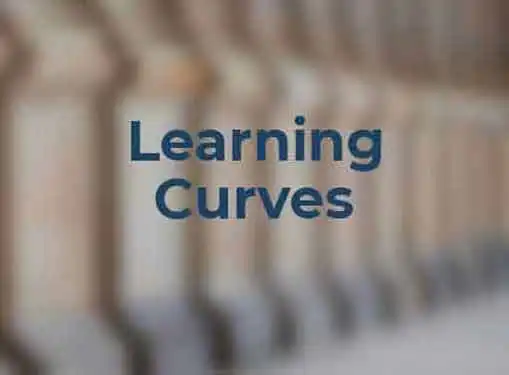Operations Management
Learning Curves
Written by Andrew Goldman for Gaebler Ventures
Learning Curves are more than just a buzzword. By understanding the learning curve formula, you can create tests for potential new hires that will indicate their future performance.
Most people are familiar with the term "learning curve" but few understand its application in business.

The phrase Learning Curve is defined by dictionary.com as a graphic representation of progress in learning measured against the time required to achieve mastery.
This rather vague definition does not fully explain the importance and implications of learning curves.
When we are considering hiring a new employee, how quickly they can learn the new skills and obtain "mastery" status can have a great impact on our bottom line. By using the learning curve formula, we can calculate whether or not potential hires will be able to reach "mastery" status.
The formula is not overly complicated, but many small business owners may find it unnecessary for their purposes. If this is the case, you can still understand the variables in the formula and understand how a couple of trial performances can indicate future performance for a prospective hire.
If your company has repetitive tasks for employees (manual labor, phone calls etc) you should attempt some trials before hiring a new employee in order to predict the potential hire's capabilities.
The first step should take place during the interview process or during a training period. It's important to note that the results of these tests could prove the employee incapable of performing at an acceptable level. For this reason, it's best to perform these evaluations prior to hiring the employee or at worst during the trial period of the employee's tenure.
Conduct several trials with the prospective employee. These trials should consist of the actual work the employee would be performing. If it a customer service employee, they may make several phone calls. If it is a manufacturing operation, it might be packing boxes or completing shipping orders.
You should have a target level for your employees. For example, you may want a shipper to box 20 orders per hour (or 3 minutes per order). The result of the learning curve formula will indicate how long it will take for the prospective hire to reach this level.
Once you've conducted several trials, you should calculate the employee's learning percentage. If it took them 10 minutes to pack the first order and 8 minutes to pack the second order, then they are learning at 20%. Once you have the time to complete the first unit and the learning percentage, you can see whether or not the employee would be able to reach the target pace by a set number of trials.
The set number of trials is the amount of trials you are allowing before the employee would reach the optimal pace. Using the example above, you might make a cut off at 50 orders. If the potential hire, cannot pack orders at a rate of 3 minutes per order by the 50th order, they should not be hired. You can easily due this math with the few variables you've obtained.
The rest of the formula can be found here:
While this is not fool-proof, it can be extremely helpful when analyzing prospective hires. It can help weed out slow employees and save your company money and time down the road.
The calculations are simple, and at the very least, having prospective hires conduct trial runs is a great way to find solid employees while avoiding the poor performers.
Andrew Goldman is an Isenberg School of Management MBA student at the University of Massachusetts Amherst. He has extensive experience working with small businesses on a consulting basis.
Share this article
Additional Resources for Entrepreneurs

Conversation Board
What's your take on learning curves? Does your organization use them to improve productivity?